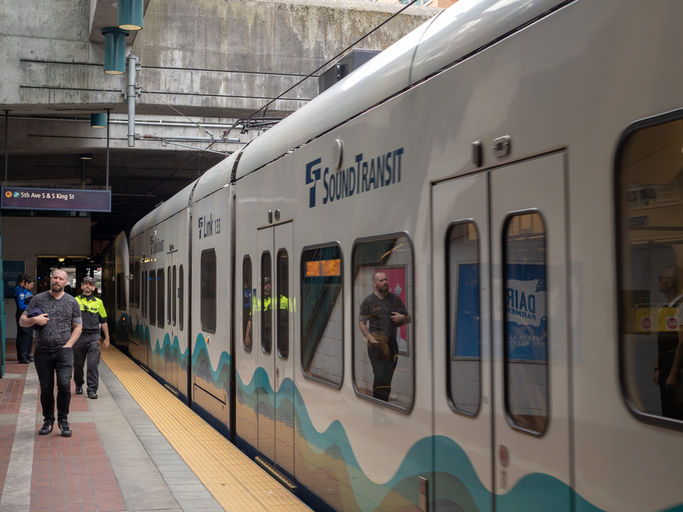Related Articles
Contact: Tyler Nebeker
206-937-9691
tnebeker@washingtonpolicy.org
SEATTLE – Washington Policy Center (WPC) today predicted bumps in the road for those wanting to toll I-90 to pay for a new Highway 520 bridge.
Washington Policy Center points out that tolling the I-90 bridge in order to pay for a new 520 bridge runs counter to research demonstrating the value of fairer tolling systems in which there is a direct connection between a fee and a road project. WPC also suggests lawmakers change policies that artificially inflate the cost of bridge replacements and other transportation projects.
“Tolling drivers from Issaquah, North Bend, Bellevue and eastern Washington when they use a paid-for bridge, in order to pay for a totally separate highway project, will be seen as fundamentally flawed,” said Washington Policy Center President Dann Mead Smith. “Our highway system was constructed largely on the principle that users pay. Tolling I-90 to help pay for Highway 520 is simply bad policy and would set a bad precedent.”
If tolling rates on I-90 are similar to Highway 520, drivers will face what is essentially a new tax of a $16 to $32 a week, based on five weekly round trips. Variable tolling rates for 520 are posted by the Washington Department of Transportation (WSDOT).
Governor Gregoire began the 520 bridge replacement project before full funding was in place. WSDOT reports the project is now $1.4 billion short. Recently discovered design mistakes, which led to cracked pontoons, will push the project deeper into the red. Repairs are expected to cost over $100 million.
WPC says the problem of costs for the 520 bridge replacement, and swelling prices for other highway projects, goes beyond design flaws and poor planning. WPC’s research shows state government imposes policies that artificially increase its own costs for highway projects. Adjusted for inflation, the new 520 Bridge project, for example, will cost 20 times more than when it was first built in the 1960s. WPC points out that the state could save millions by not charging itself sales taxes, by paying market rates for labor, and by streamlining the permitting and environmental review process:
- The state should stop charging itself sales tax for transportation projects
Washington State Department of Transportation (WSDOT) officials are required to pay state sales taxes on state transportation projects, which funnels transportation money into the general fund. WSDOT officials estimate that project delivery costs could be reduced by over six percent if their projects were exempt from state sales taxes. Applied to the 520 bridge project, enacting this exemption could save up to $351 million. This year SB 5003 was introduced to exempt transportation projects from paying sales taxes.
- Use real market wages, rather than the artificially inflated prevailing wage system
State officials charge themselves an inflated “prevailing wage” formula rather than the normal market rate for construction work. Contractors would, if the law allowed, be more competitive on labor costs. Studies show that imposing prevailing wage rules on transportation projects unnecessarily increases labor costs by 22 percent and boosts total project costs by about 10 percent. Saving 10 percent on a $4.13 billion project such as the 520 bridge could save up to $413 million.
- Reducing regulatory hurdles
In 2007, the Interstate 35 bridge in Minneapolis collapsed. Remarkably, a new, state of the art, ten-lane bridge opened just 414 days later. The new bridge cost less than $300 million. Officials were able to rebuild the bridge quickly and less expensively in part because permitting and environmental reviews were streamlined. By contrast, officials have already spent more money on planning and design for the new 520 bridge than the total cost of building the first bridge, adjusted for inflation. The Federal Highway Administration (FHWA) estimates that a typical Environmental Impact Statement took an average of 2.5 years to complete in the 1970s. Today it takes 6.5 years. According to the FHWA, highway projects now take an average of 13 years to build. Only a fraction of that time is spent on actual construction. Streamlining permitting and environmental reviews would speed construction of vital projects, save money and serve the public better. Several bills have been proposed this year to improve the regulatory process, including:
- HB 1236 to require permit decisions within 90 days
- HB 1996 to address environmental standards related to transportation projects
- HB 1978 to improve permitting of transportation projects
Washington Policy Center recommends the state only toll road projects when:
- They are implemented on new capacity or to replace an existing facility
- Money from tolls are spent only on the same road where the tolls are collected; tolls should not be applied to multiple facilities within a broadly defined corridor
- Toll revenue is protected for highway purposes
WPC’s tolling policy may be found in chapter 10 of the Policy Guide for Washington State and in the WPC transportation study "A Roadmap for Mobility."



